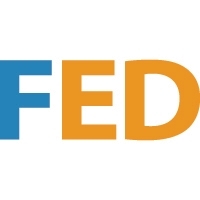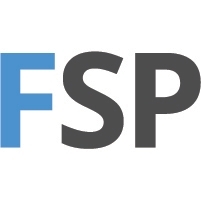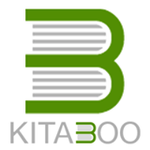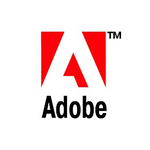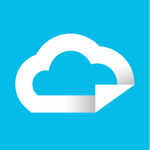What Is Digital Rights Management Software?
Software for digital rights management, or DRM, is a complete system that makes it possible to distribute, control, and safeguard digital information. Businesses that handle sensitive, valuable, or copyrighted digital data such as music, films, e-books, software, and documents need this essential technology. To put it simply, DRM software ensures safe access and stops illegal distribution while assisting publishers and content producers in keeping ownership and control over their digital goods.
How does DRM software operate, then? This software's primary functions include encrypting digital files and granting users access permissions or licenses. The encryption makes sure that no one without the appropriate authorization or license may read or access the content. This is particularly crucial for companies that sell or subscribe to digital goods since it stops piracy and unlawful distribution, protecting their profits and intellectual property.
Additionally, DRM software provides a number of tools and functions for tracking digital content usage, managing licensing, and regulating access. These features enable companies to monitor and restrict the number of times a certain piece of material may be accessed, measure how the content is being used, and distribute and license their digital products with ease.
Because they can precisely track and manage user access, subscriptions, and usage, these features are very helpful for companies that provide subscription-based services. The capacity of DRM software to offer robust copyright protection for digital content is one of its primary advantages. Businesses who depend on digital material for their income streams will find it to be a worthwhile investment because it drastically lowers the danger of piracy and unlawful distribution by encrypting and restricting access to the content.
To further improve content security, DRM software frequently includes cutting-edge security features like digital fingerprinting, copy prevention, and watermarks. Additionally, DRM software provides opportunities for content customisation, enabling companies to modify their digital goods for various markets or users. This might involve a variety of factors, such as device compatibility, languages, and price methods. Businesses may satisfy the wants and demands of their target market with this flexibility, which eventually increases customer retention and satisfaction.
What Are The Recent Trends In Digital Rights Management Software?
Due to changes in consumer behavior and technological improvements, the landscape of digital rights management (DRM) software has changed significantly in recent years. Before making a purchase choice, customers should be informed of the following key trends in DRM software.
1. DRM Solutions That Are Cloud-Based: An increasing number of DRM systems are shifting to cloud-based platforms due to the growth of cloud computing and the growing demand for remote access. This enables improved scalability and user accessibility, as well as simpler and quicker deployment. Additionally, cloud-based solutions provide greater price flexibility and are frequently more economical for companies.
2. Prioritizing The User Experience DRM: Software providers are putting a lot of emphasis on user experience as customers grow more tech-savvy and seek a smooth digital experience. This contains features that are tailored to the needs of various users, efficient procedures, and intuitive interfaces. In addition to raising customer happiness, a better user experience also boosts an organization's DRM software adoption rates.
3. Support For Multiple Devices DRM: Software must support a wide range of devices, operating systems, and file formats due to the growth of many platforms and devices. Customers who want to be sure their material is safe on all devices should search for DRM programs that support several platforms. This is especially important for companies that utilize a range of devices themselves or have a diversified clientele.
4. Analytics Integration DRM: Software now understands user behavior and consumption trends in addition to protecting content. Because of this, a lot of DRM systems now come with integrated analytics and reporting features. Businesses may use this to monitor consumption, find material that is popular, and decide on their digital strategy with confidence.
5. Pay Attention To Privacy And Data Security: Data security and privacy are now important factors for DRM software buyers because to the rise in cybersecurity threats and laws like GDPR. As a result, numerous companies are putting sophisticated encryption techniques into practice and making sure their products abide by international data protection laws. Before making a purchase, buyers should carefully consider a DRM solution's security characteristics.
Benefits Of Using Digital Rights Management Software
Protecting digital content from unwanted access and use is crucial as its significance in today's corporate environment grows. Software for digital rights management (DRM) is useful in this situation. Only authorized users can access digital content thanks to DRM software, which provides a complete solution for managing and safeguarding it. We will go over the many advantages of utilizing DRM software in this buyer's guide, as well as why it can be a wise investment for your company.
1. Secure Digital Content Protection: DRM software offers robust encryption and security features to stop digital content piracy and illegal distribution. It protects content by combining licensing, encryption, and access controls, making it nearly impossible for hackers to access and distribute. This guarantees that your priceless digital assets are safeguarded and available to authorized users only.
2. Control Over Content Distribution: DRM software gives users more authority over how digital content is distributed. Businesses can regulate who can access and use their content by implementing features like digital rights management, watermarks, and expiration dates. Businesses who sell digital goods or services will find this especially helpful since it protects their income streams and stops unauthorized distribution of their material.
3. Commercialization Options: DRM software provides options for commercialization in addition to safeguarding digital content. Companies can create a new revenue stream by using DRM software to develop pay-per-view or subscription-based models for their content. Businesses who provide premium content or services and wish to increase revenue while keeping control over distribution would particularly benefit from this.
4. Better User Experience: DRM software improves the user experience in general as well. It enables companies to give clients a smooth and easy-to-use experience so they can access and consume content across a range of platforms and devices. In addition to raising consumer satisfaction, this also boosts engagement and loyalty.
5. Analytics And Reporting: DRM software provides useful information about the access and consumption of digital content. Businesses may monitor user activity, trends, and patterns with the use of comprehensive analytics and reporting tools, which can enhance marketing initiatives and assist guide content development. Potential security threats can also be found and quickly addressed with the use of this data.
Important Factors To Consider While Purchasing Digital Rights Management Software?
Any company or individual wishing to safeguard their digital assets—such as documents, films, music, and software—from unwanted access and distribution must have access to Digital Rights Management (DRM) software. Purchasing DRM software has become essential for both small and large enterprises due to the increasing risk of data breaches and piracy. It can be difficult to select the best DRM software, though, because there is a large variety on the market. Here are some crucial elements to think about when buying DRM software to help you make an informed choice.
1. Security: Preventing unwanted access to your digital content is the main goal of DRM software. Thus, your primary focus should be on the software's security features. For optimal protection of your digital assets, look for features like digital signatures, access control, watermarks, and encryption.
2. Compatibility: Verify that a DRM program is compatible with the kinds of files and formats you wish to safeguard before buying it. Make sure the software suits your needs because some may be made especially for a particular sort of file.
3. User-Friendliness: DRM software must to be simple to use and comprehend. Search for an easy-to-use UI and straightforward navigation. Make sure the program you chose is straightforward to use because the last thing you want is to spend hours trying to figure it out.
4. Scalability: You may need to safeguard additional files as your company expands and your digital assets grow as well. Selecting a DRM program that can manage a lot of data and be readily expanded to meet future needs is therefore essential.
5. Integration: Verify that the DRM software easily interfaces with any other programs or systems you use to manage your digital assets. This will provide a seamless workflow and effective digital asset management.
6. Cost: It is crucial to take the cost into account because DRM software can be a costly investment. Seek out software that is reasonably priced and provides good value for the money.
7. Support: Since technical problems might arise at any time, selecting a DRM program with dependable customer service is essential. Choose software that offers round-the-clock assistance and a committed staff to help you with any issues.
8. Reputation: Choose a trustworthy DRM software vendor by doing your homework. To gauge the caliber of their software and services, look for user reviews and ratings. To sum up, investing in DRM software is an important choice that has to be carefully thought out. You can choose a dependable and efficient DRM program that suits your requirements and gives your digital assets the required security by keeping these important considerations in mind. Make sure you carefully consider all of your alternatives and select the program that best suits your needs.
What Are The Key Features To Look For In Digital Rights Management Software?
To make an informed choice while buying Digital Rights Management (DRM) software, there are a few essential aspects that one should consider. These capabilities are necessary to guarantee the effective management and protection of your digital content.
1. Security Features: The security features of DRM software are among its most crucial features. To make sure that your work is shielded against unwanted access and distribution, look for features like encryption, watermarks, and authentication techniques.
2. Compatibility: It's critical to confirm that the DRM software works with the devices and content types you plan to use. The software should be able to support a variety of platforms and formats, including audio files, ebooks, and videos.
3. Flexibility: It is crucial to have DRM software that permits you to apply different kinds of restrictions to your content. While some software may give a more forgiving approach, others may offer more restrictive settings. Select the one that best meets your needs.
4. Usage Tracking: Another important aspect to think about is the capability to track and monitor how your material is being used. This can help you make well-informed decisions about your DRM strategy by providing you with information about who is using your material and how.
5. Customization: A quality DRM program should enable user experience customization, including language choices, branding, and user interface. This will promote your brand and make it simpler for your customers to engage with your material.
6. Integration: It's crucial to make sure the DRM software can easily interact with any current systems you may have. Long-term, this will save you time and money.
7. Customer Support: Seek out a DRM software supplier with top-notch customer service. This will be essential if you run into any technical issues or have inquiries about how to use the program most effectively.
Why Do Businesses Need Digital Rights Management Software?
In the current digital era, businesses rely significantly on digital assets and technology. These assets include intellectual property, sensitive data, and other important information that must be safeguarded against a variety of risks, including theft, illegal access, and piracy. Businesses need a strong system that can efficiently manage and enforce digital rights in order to protect these assets. Software for Digital Rights Management (DRM) is useful in this situation.
DRM software is an all-inclusive solution that gives companies the power to manage and control how their digital assets are used, shared, and accessed. This software guards against unauthorized copying, modification, and sharing of digital content using licensing, encryption, and other security methods. Protecting sensitive data from online dangers is one of the main reasons organizations want DRM software.
Businesses are more vulnerable to data breaches, cyberattacks, and other types of cybercrime in today's linked world. DRM software greatly lowers the danger of data compromise by ensuring that only authorized users can access and utilize the company's priceless digital assets. Additionally, companies use DRM software to protect their digital assets outside of their corporate network due to the growing trend of remote work and the use of personal devices for work-related tasks.
Even if the files are saved on personal devices, this software enables companies to implement DRM controls to documents, films, and other digital property, preventing unauthorized access or dissemination. The ability of DRM software to enforce copyright protection is another crucial feature. Copyright is crucial for companies in creative industries like publishing, music, and cinema.
DRM software ensures that companies are fairly compensated for their labor by preventing unauthorized use or distribution of their copyrighted content. DRM software gives companies useful analytics and reporting features in addition to security and copyright protection. Businesses may make well-informed decisions and create successful strategies for their digital content by using these technologies, which give them information into how their digital assets are being used.
How Much Time Is Required To Implement Digital Rights Management Software?
A number of variables, including the size of your company, the complexity of your digital assets, and the kind of DRM solution you select, might affect how long it takes to apply DRM software. Generally speaking, the procedure may take a few weeks to many months. Assessing your company's current digital infrastructure and identifying which assets require DRM protection should be your top priority.
Next, you must choose a DRM system that fits your unique requirements. Depending on how your company makes decisions, this selection process may take a few weeks to many months. Integrating a DRM solution with your current systems is the next step after choosing one. Configuring authentication techniques, establishing user permissions, and applying DRM controls to your digital goods can all be part of this.
The overall implementation time may be significantly impacted by the intricacy and extent of this integration process. Implementation time may also be increased by training and onboarding staff members who will be utilizing the DRM software. Onboarding can be sped considerably with the use of training and support services provided by some DRM providers.
Lastly, it may take several weeks to test and adjust the DRM solution to make sure it is functioning properly and fulfilling the needs of your company. Following the completion of the implementation process, your company can begin utilizing the DRM software to safeguard its digital assets.
What Is The Level Of Customization Available In Digital Rights Management Software?
A specialized tool called digital rights management (DRM) software gives distributors and content producers control over how their digital files are used and shared. One of the main characteristics of DRM software is its degree of customisation, which is the user's capacity to modify the program to suit their own demands. Each digital rights management software product has a different degree of customisation. Nonetheless, the majority of contemporary DRM solutions include a high level of customisation, enabling customers to alter different software features to meet their particular requirements.
These personalization choices may consist of:
1. User Permissions: Content producers can specify various permission levels for their digital assets, including view-only, print-only, and download-only, using DRM software. This gives businesses the ability to regulate how various people view and utilize their content.
2. Watermarking: Digital files can have watermarks added to them using certain DRM programs. This makes it simple for content producers to monitor and spot any unlawful use by allowing them to include their logo or copyright information in their files.
3. Integration With Current Systems: E-commerce platforms and content management systems are two examples of current systems that DRM software can be integrated with. This enables companies to modify the software so that it blends in perfectly with their current processes.
4. Design And Branding: A lot of DRM programs have user interfaces that can be customized, so companies may use their own colors and logo to identify the program. Customers benefit from a more polished and reliable user experience as a result.
5. Content Protection Settings: DRM software lets customers configure particular protection parameters for their content, like device restrictions, expiration dates, and the maximum number of times a file can be viewed. This enables companies to alter the degree of security for their digital assets.
6. Reporting And Analytics: The majority of DRM solutions come with powerful reporting and analytics features that let companies monitor and examine how their digital files are being used. They can use this to inform data-driven choices about how to distribute their content. In conclusion, while there are differences in the amount of customization that can be achieved with digital rights management software, contemporary DRM solutions generally provide a high level of flexibility. This makes the program a useful tool for managing and safeguarding digital assets since it enables companies to customize it to meet their own demands and specifications.
Which Industries Can Benefit The Most From Digital Rights Management Software?
Software for digital rights management, or DRM, is a potent instrument that aids businesses in safeguarding their digital property and effectively managing its dissemination. Although digital media like music, movies, and ebooks may be its main application, DRM software has advantages for a variety of businesses. We will go over the several industries that stand to gain a great deal from the use of DRM software in this buyer's guide.
1. Entertainment Sector: The entertainment sector is continuously creating and disseminating digital material, including games, music, TV series, and films. Due to their heavy reliance on digital content, several businesses are vulnerable to copyright violations and piracy. DRM software is necessary to safeguard their copyrighted content and guarantee that they get paid fairly for their labor.
2. Publishing Industry: DRM software is becoming more and more necessary as the publishing industry becomes more digital. Publishers can employ DRM software to protect their content from unauthorized distribution and replication in a variety of digital formats, including ebooks, digital magazines, and newspapers. In addition to safeguarding their intellectual property, this keeps their business model viable.
3. Software Industry: Software piracy is a serious problem that can have a big effect on software companies' earnings. These businesses can stop illicit distribution and guarantee that only authorized users may access their software by utilizing DRM software. Additionally, it can assist keep the product's integrity intact and prevent software vulnerabilities.
4. Education Sector: With e-learning becoming more and more popular, the education sector is another one that stands to gain a lot from DRM software. Educational institutions can prevent unauthorized sharing and access to their digital lectures, course materials, and other educational resources by putting DRM into place.
5. Healthcare Sector: Healthcare institutions handle private patient data that must be shielded against unwanted access. By using DRM software, they may guarantee that these digital documents are only accessible by authorized people, protecting patient privacy and adhering to legal requirements.
6. Governmental Organizations: Governmental organizations handle a great number of sensitive information that must be kept safe at all costs. DRM software can assist these organizations in preventing data leaks and managing access to sensitive material, including national security documents. QA
Conclusion
In conclusion, in the current digital era, using Digital Rights Management (DRM) software is essential for safeguarding your priceless digital information. Any content creator or distributor must invest in a strong DRM system given the growing risk of piracy and illegal distribution. Prior to making a purchase, it is crucial to take your budget and unique requirements into account after doing extensive research and evaluating the many DRM software solutions.
Seek out a DRM solution with robust encryption, adaptable license choices, and extensive reporting capabilities. Additionally, confirm that the DRM software works with the devices and file formats you intend to utilize. You might also want to think about the vendor's degree of customer service and support.In the end, the proper DRM software will safeguard your digital content while simultaneously giving your clients a flawless user experience.
You can protect your intellectual property and reduce the amount of money you lose to piracy by making an informed choice. We wish you well in your digital distribution aspirations and hope that this buyer's guide has been helpful in your hunt for the ideal DRM software.




